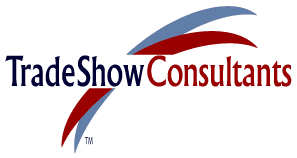





I think you’ll agree that most sales and marketing people have very different personalities and depending on corporate culture, management styles and direction, the important functions they direct and manage can either work together in harmony or be very challenging especially for successful trade show exhibit planning and participation.
In many corporations, the trade show exhibit program is considered, managed and budgeted as a marketing support function and usually reports to either a marketing, marketing communications or advertising manager. Trade show exhibiting joins the advertising, public relations, sales promotion and sales support departments as a marketing activity and there in lies the potential for friction and general disagreements with a sales team’s needs, philosophies and performance mandate.
In his book the The Gamesman H. Maccoby, developed from his extensive research and interviews with corporate America, four types of organizational personalities: the craftsperson, the organizational person, the jungle fighter and the gamesman. His focus states that no one is purely of one type, but rather a mixture depending on the circumstances and challenges confronting each during the course of daily management responsibilities and business pressures.
The same can be said for the personalities of marketing and sales people when faced with challenges and every day business situations, however, there is a difference between the two and those dynamics often show themselves when faced with the tasks of trade show planning and successfully executing exhibit functions on the show floor.
Although the personality traits of each discipline may often blend with top management’s insistence on team cooperation and focus on overall company success, in reality, each person’s daily tasks and responsibilities tend to follow along department lines and philosophies. Simply stated, the marketing people do what they are directed to do and the sales people do what they directed to do.
Much of marketing’s personality is based on strategic thinking and planning. Tasks often include market research, competitive analysis, product introduction program development and the design of selected communications and advertising campaigns. Marketing communications, web development, direct mail, print advertising and public relations activities are all a part of the marketing department’s mix of duties and responsibilities.
According to Robert A. Grayson, author of the book Introduction to Marketing, “Marketing is a commercial process which attends and facilitates the movement of goods and services through the economy to enlarge and satisfy consumer needs consistent with the corporation’s fundamental objectives.” While Grayson goes on to list most of the functions and tools of the marketing mix, he does not list the actual face to face tactical selling function which is usually confined to and the sole responsibility of the sales team.
The early development of the corporate marketing function as we know it was accomplished at Procter and Gamble when in 1879 they introduced Ivory soap to the consumer masses. It wasn’t until the late 1920s that Proctor and Gamble’s concept of a brand management system began to take shape. This innovative marketing organization was officially created in 1931 and was based on competing brands managed by dedicated groups of marketing people. The new system provided more specialized consumer marketing strategies for each brand and Procter & Gamble's famous brand or product management system was born and copied today by many successful corporations.
Since then, Proctor and Gamble has successfully introduced main stays in the consumer world including: Crest toothpaste, Crisco cooking oil, Head and Shoulders shampoo and Old Spice after shave lotion to name a few.
While working at Memorex, management decided to enter the audio tape business which was then dominated by 3M and they cleverly hired a team of Proctor and Gamble marketing executives to head up the new consumer audio tape division. It didn’t take these experts long to develop the ingenious advertising campaign, “Is it live or Memorex? Reproduction so true it can shatter glass”, at Leo Burnett Advertising in Chicago and within one year commandeered almost 14 % of the world wide audio tape business away from a dazed 3M Corporation.
That innovative program was an excellent example of successful consumer marketing directed by a team of professional marketers who knew how to develop and launch a new consumer product using the science of “pull through” marketing they learned so well at Proctor and Gamble.
In contrast to the extremely successful consumer audio tape division’s accomplishments against 3M, Memorex’s business to business divisions who were pitted against IBM and other computer mainframe manufacturers were struggling to survive. This untenable situation provided a poignant appreciation of the unique differences between consumer and business to business marketing effectiveness.
Consumer product marketing teams, like those developed by Proctor and Gamble, are the foundation of many of today’s successful corporations where consumers are driven by advertising to stocking retailers to purchase featured products. The activity of selling actually takes place in the executive offices of various retailers who are pitched to assign their valuable retail shelf space to heavily media supported new products.
Business to business marketing however, is quite different in the fact that few customer individuals are able to purchase capital products without formal authorization from their purchasing people and it often requires sales people making field sales calls to present, demonstrate, negotiate and earn a purchase order for the products they represent.
The personalities of sales and marketing people with regards to tactical trade show exhibiting are very unique and today’s exhibit manager might want to better understand the differences to appreciate their individual motivations, character traits and operational styles in an effort to foster excellent working relationships between the two.
Simply stated, marketing people tend to be more strategic, conservative and long term thinkers, while sales people are often considered more tactical, short term thinkers, action oriented and impatient with concepts that don’t promise deliver immediate sales results.
The selling function in many corporations is more immediate and tactical and many salespeople’s personalities are different from those working in the more strategic marketing areas. Most sales people enjoy the challenge and freedom associated with their ability to earn what they’re worth and often excel when matched against the competition.
Sales, however, has a major disadvantage of being judged, much like looking at the score board at a sporting event, where their sales can be viewed, measured and evaluated at almost any point in time and no matter how well they’ve done, their fame and fortune often only lasts as long as their last sale. “So, what have you sold for us today?” are simple words that usually send chills down a salespersons spine.
The marketing function is usually managed by strategic people who enjoy research, planning, developing and executing programs that are deemed to be well thought out and usually unfold over time; while sales are important, there are other quantitative, qualitative results and analysis that are viewed as equally important that might add to the research, development and success of future marketing programs.
I’ve worked on both sides of the sales and marketing aisle and found both to be challenging and rewarding. As a salesman in the field, I was motivated by learning the professional approach to successfully selling, meeting or exceeding my monthly sales targets and making as much money as I could while enjoying being responsible for managing my own time and resources.
The corporate marketing side of my experience calmed me down a bit and forced me to become more systematic and strategic and less anxious to sell more products faster. The corporate environment seemed to require me to become more sophisticated, less frantic and more professional where time was measured more in business quarters instead of weeks, months or days as was the case when I was a salesman in the field.
Also, while working in marketing, I appreciated not working in the pressure packed environment of sales and being asked by almost anyone in management, how my sales to target looked. How close I thought I’d come to making my sales numbers and/or how much business I expected to close within any given period of time.
Any sales team’s performance can be judged on a daily basis, whereas marketing has more time to adjust to market trends, purchasing cycles and various product issues. This dynamic often creates an environment of discomfort among sales and marketing people and in many cases exposes the underlying tension that exists between the two just below the surface.
For me, the many lessons learned while working in the sales and marketing departments of large corporations culminated when I was asked to join OrCAD Systems Corporation, a new start up Software Company where I assumed Vice President level responsibility for both sales and marketing.
I quickly found myself required to effectively blend the strategies of marketing with the tactics of sales and did so successfully by first attempting to sell product and then using whatever results learned to better identify and utilize various additional marketing support tools to pave the way to greater sales.
I began developing a mental outline for the “Bridging the Gap Between Trade Shows and Sales” presentation and realized that my opportunity to further study the FASEB exhibit from high above the show floor was a gift. I spent most of the rest of the show in the seats above the show floor observing, taking notes and building a comprehensive outline for my new exciting presentation.
In addition to watching our newly energized booth personnel (now personally led by our Vice President of Sales) interact with suspects, prospects and customers, I began to notice how the exhibit functioned in communicating and realized that long before the attendee entered the exhibit he/she would prefer to stand in the aisle to read our various signs.
OrCAD’s trade shows were focused on sales and generating quality sales leads. The leads were rated cold-warm-hot and were followed up on one week following the show. Each lead card distributed had hand written notes of the exchange and the rating identified by the interviewer indicated the level of buying interest. It was also known by the field sales team members that I would call leads at random soon after the show to confirm that they were contacted and satisfied with the way they were serviced.
Contrary to OrCAD’s trade show sales lead system, a client of mine first used a give-away promotion to build booth traffic and after hearing “I just wanted to win the drawing” from leads distributed after the show, the sales team didn’t waste their time following up on any of that show’s leads because the quality just wasn’t there and the promise of making a sale didn’t exist.
The trade show is a unique tactical, face to face sales event, staged for two or three days which presents an exhibitor with an entire market of suspects, prospects and customers considering the purchase of products and services. The success or failure of a company’s trade show effort is usually judged by how effectively the leads were generated, followed up on and new sales booked.
The Challenge
The challenge for many trade show managers is to create and foster a cooperative planning environment where the dynamics of tactical sales and strategic marketing personalities can work together to contribute their individual talents and perspectives in reaching for new levels of trade show sales success.







All Rights Reserved | Trade Show Consultants